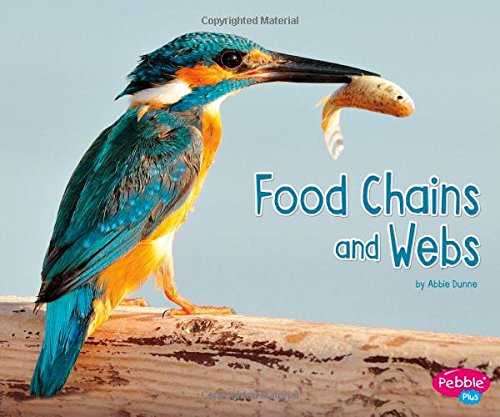-
Living or Nonliving?
Abbie Dunne
Paperback (Capstone Press, Aug. 1, 2016)Simple text and bright photographs explain the concept of living and nonliving things for beginning readers. The book concludes with a simple, kid-friendly activity. M
M
-
Nocturnal Animals
Abbie Dunne
Paperback (Capstone Press, Aug. 1, 2016)Simple text and bright photographs explain the concept of nocturnal animals for beginning readers. The book concludes with a simple, kid-friendly activity. M
M
-
Animal Classification
Jennifer Fretland VanVoorst
Library Binding (Abdo Publishing Company, Jan. 1, 2014)"Explores the development of how and why animals were grouped together."-- S
S
-
Glencoe Life iScience, Grade 7, Science Notebook
McGraw-Hill
Paperback (McGraw-Hill Education, Aug. 30, 2010)Based on the Cornell note-taking format, this resource incorporates writing into the learning process. Directly linked to the student text, this notebook provides a systematic approach to learning science by encouraging students to engage by summarizing and synthesizing abstract concepts in their own words E
E
-
Food Chains and Webs
Abbie Dunne
Paperback (Capstone Press, Aug. 1, 2016)Simple text and bright photographs explain the concept of food chains and webs for beginning readers. The book concludes with a simple, kid-friendly activity. M
M
-
Animal Group Behavior
Abbie Dunne
Paperback (Capstone Press, Aug. 1, 2016)Simple text and bright photographs explain the concept of animal group behavior for beginning readers. The book concludes with a simple, kid-friendly activity. L
L
-
Living or Nonliving?
Abbie Dunne
Library Binding (Capstone Press, Aug. 1, 2016)Simple text and bright photographs explain the concept of living and nonliving things for beginning readers. The book concludes with a simple, kid-friendly activity. M
M
-
Nocturnal Animals
Abbie Dunne
Library Binding (Capstone Press, Aug. 1, 2016)Simple text and bright photographs explain the concept of nocturnal animals for beginning readers. The book concludes with a simple, kid-friendly activity. M
M
-
Respiration and Photosynthesis
Donna Latham
Paperback (Raintree, Jan. 22, 2009)How do plants help you breathe? Why are fungi and bacteria important? Do plants have lungs? The visually stimulating 'Sci-Hi' books take learning science core curriculum to a whole new exciting level. Each title explores an area of life, physical, or earth science in a way that is both engaging and comprehensive. X
X
-
Animal Classification
Angela Royston
Paperback (Gareth Stevens Pub Learning library, Jan. 1, 2013)Introduces the classification of animals and describes how they are categorized according to their biological structures, behavior, and methods of reproduction. O
O

